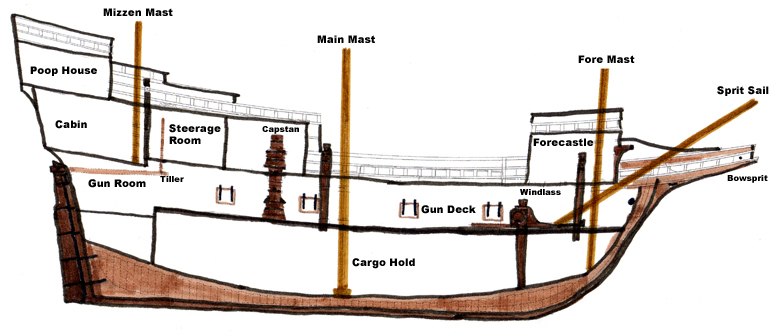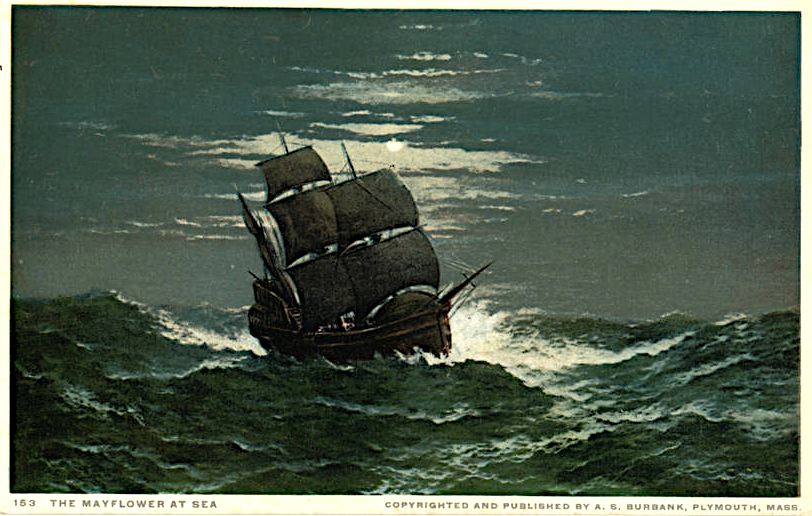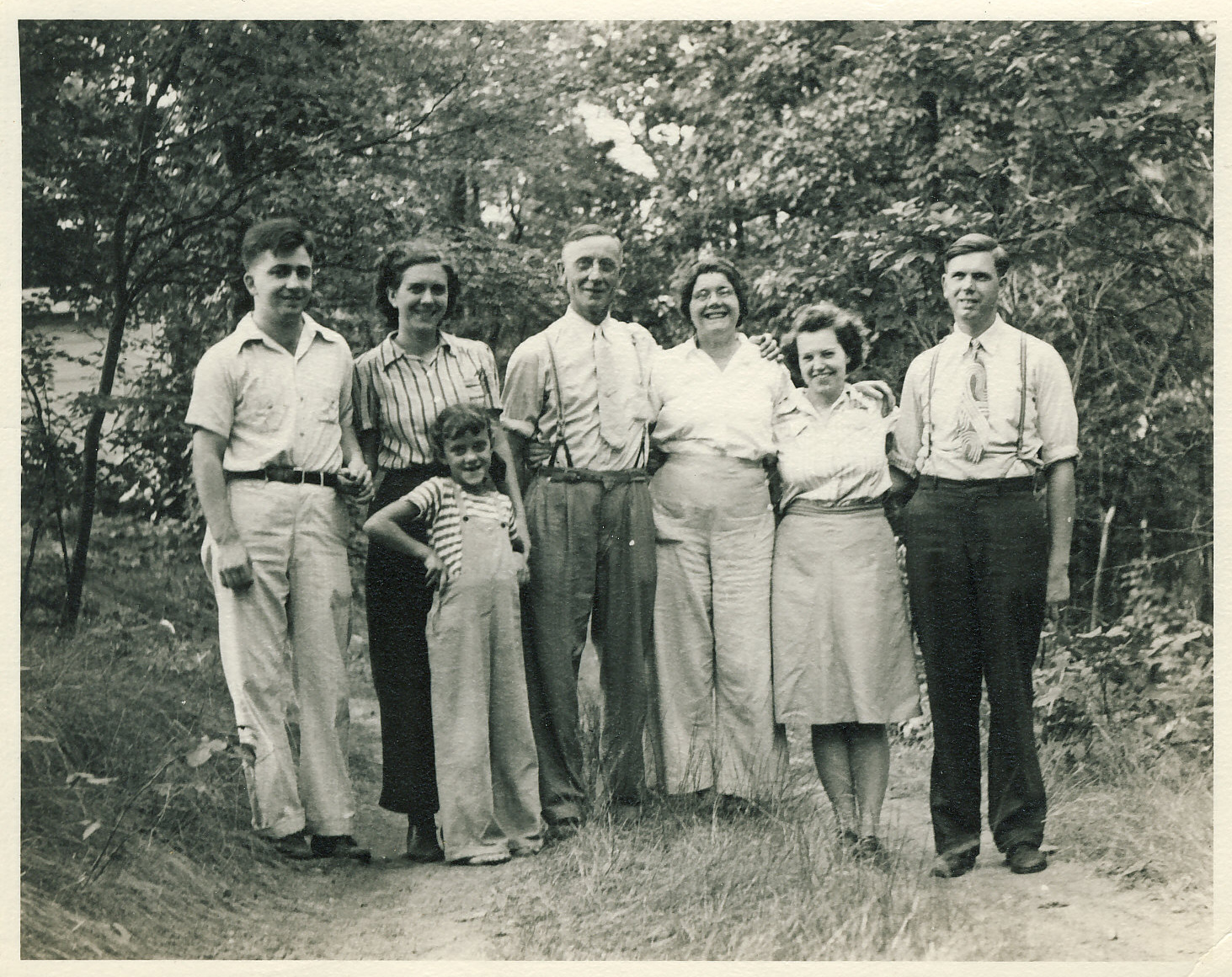The Mayflower may be best known for its Separatist passengers who left the Church of England in 1607, went to Holland, then decided in 1620 to establish a colony in North America. They called themselves the “Saints.” We call them the Pilgrims.

by American painter Robert Walter Weir, 1857 (Wikipedia)
But of the 102 passengers on the Mayflower, only about half[1] were “Saints.” The other passengers — the “Strangers” — consisted of English tradesmen and adventurers and their families who were recruited by London merchants to help establish the Colony of Virginia.
Edward Doty — my wife’s 9th great-grandfather — was among the Strangers. He was one of two servants employed by Stephen Hopkins.
Doty’s master, Stephen Hopkins, had been to North America before. He had the misfortune of being shipwrecked on the island of Bahama while sailing for Jamestown in 1609, then lived four years in the Jamestown settlement, from 1610 to 1614. Upon his return to England Hopkins moved to London where he married in 1617.[2] It’s reasonable to assume Hopkins hired Edward Doty there, though Doty’s birthplace is unknown.[3]
Numerous sources believe the Bahama island shipwreck story was the inspiration for Shakespeare’s play The Tempest, and that one of the play’s characters, Stephano, may have been modeled after Stephen Hopkins.
The Mayflower was about 100 feet long and 25 wide, with four decks to accommodate the passengers, crew, and cargo. The gun deck, used as the passenger compartment for the trip, was cramped — a space of about 50 by 25 feet with a 5-foot ceiling — and the passengers were confined there throughout the voyage.[4]

Halfway across the Atlantic, storms began lashing the ship, “causing the ship’s timbers to be badly shaken, with caulking failing to keep out sea water, and the passengers, even in their berths, lying wet and ill.”[5] Edward Doty, at age 21 or so, would have been in better condition to weather the voyage’s hardships than some of the others, but must have nevertheless found it trying. So would’ve his master’s wife, Elizabeth, who gave birth to a son, Oceanus, during the voyage.
The second half of the sailing was storm-tossed and caused the ship to lower its sails for days at a time, extending its voyage, and sending it off course.

After over two months at sea, the Mayflower crew, on 19 November 1620, spotted land at Cape Cod. After trying to sail south to their planned destination at the Hudson River (then at the northern edge of the Colony of Virginia), strong winter seas forced them to return to the harbor of Cape Cod Bay, where they anchored on 21 November.[6]
Essentially, they landed outside of the purview of the Virginia Company charter granted by the King of England, leading them to establish their own governing document before sending out their exploratory party. That story will be considered in the following post.
Part 3: Signer of the Mayflower Compact
Footnote(s)
[1]. FamilySearch Blog, “Mayflower Passenger List and Other Mayflower Passenger Facts,” https://www.familysearch.org/blog/en/mayflower-passenger-list/
[2]. He was married at St. Mary’s, Whitechapel, the same church where our ancestors William Estall and Leah Hott were married a bit over 100 years later, in 1721.
[3]. In his 2006 book The Mayflower and Her Passengers, Caleb Johnson acknowledges that Doty’s birthplace hasn’t been determined, but believes Doty may have come from a family in East Halton, Lincolnshire. (See also Caleb Johnson’s MayflowerHistory.com, “Edward Doty,” http://mayflowerhistory.com/doty/)
[4]. The passengers were living here not only for the 66 days of the voyage, but for the previous two months as well: setting sail from London in mid-July, waiting on the south coast of England for the arrival of the Pilgrims from Holland, lading of the ship, repairs to the leaking Speedwell, and experiencing the false start and return to port that delayed their departure. In addition, many passengers also stayed on the ship after arrival in the new world, some as long as six months, as their settlement was being built.
[5] Wikipedia, “Stephen Hopkins (Mayflower Passenger),” https://en.wikipedia.org/wiki/Stephen_Hopkins_(Mayflower_passenger)
[6] Ibid.

One Reply to “On the Mayflower”